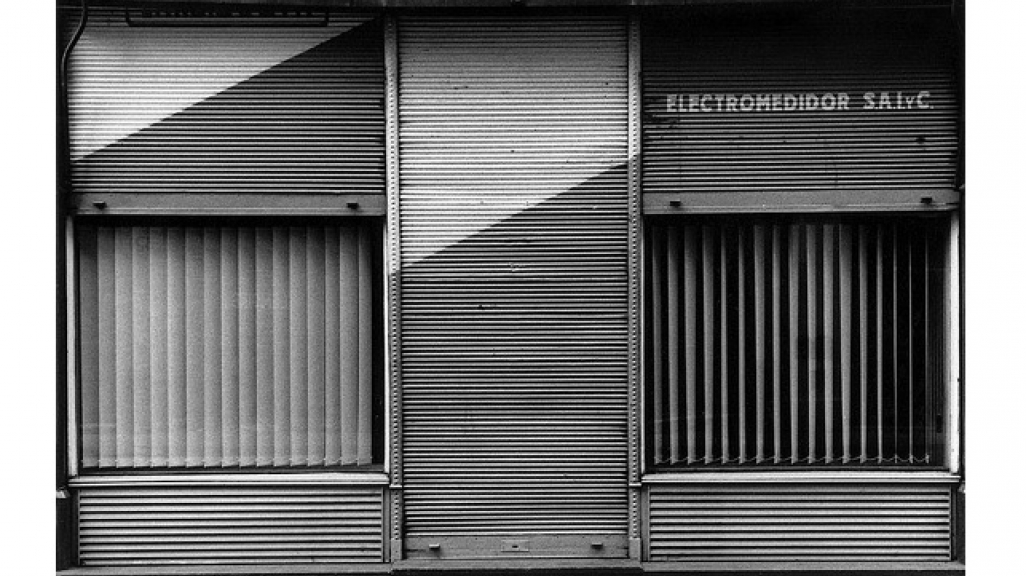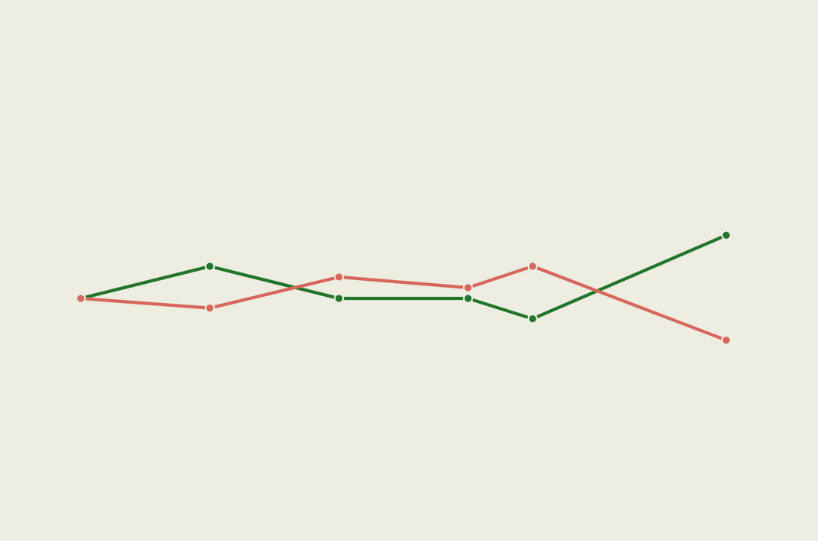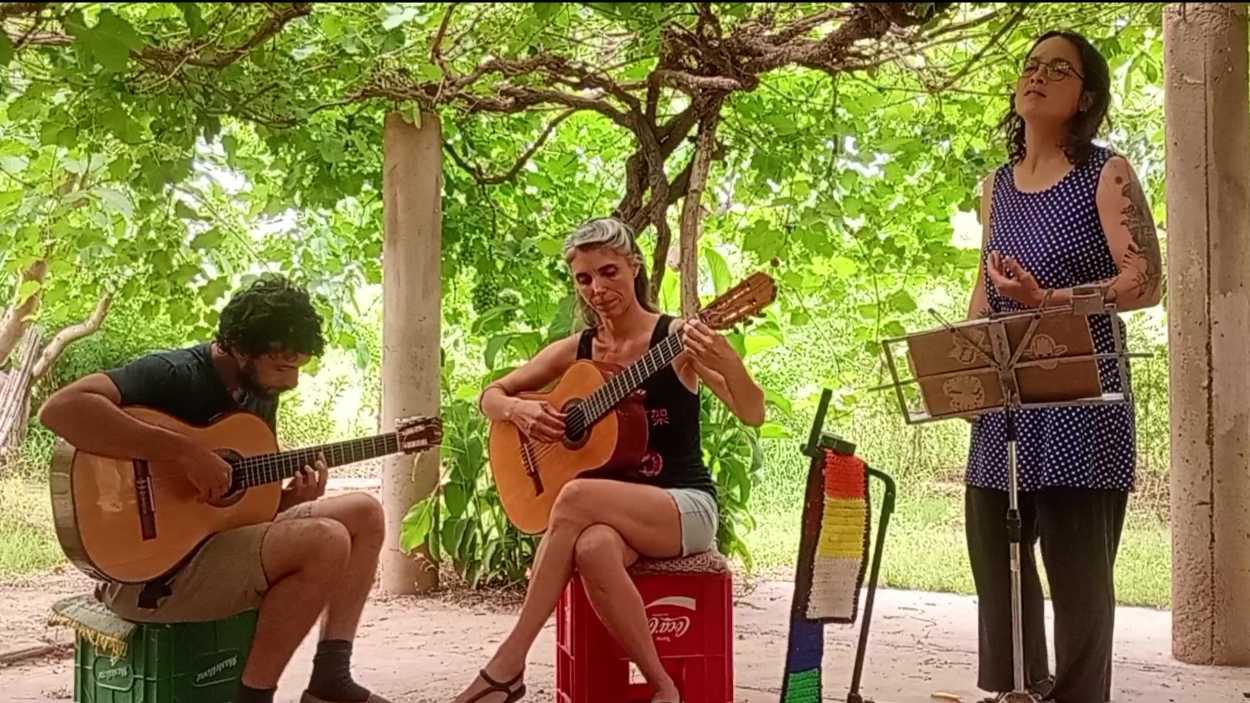Facundo de Zuviría: Siesta Argentina and other modest observations Opens January 24, 2017
Facundo de Zuviría: Siesta Argentina and other modest observations Opens January 24, 2017
Siesta Argentina, triggered by Argentina's 2001 "corralito crisis," is de Zuviría's first solo show in the United States.
On view at Americas Society, January 25 through April 1, 2017
Curators Alexis Fabry and Gabriela Rangel
Press Preview and Reception: Tuesday, January 24, 5:00 p.m.
New York, December 20, 2016—Inspired by the vernacular architecture, design, and urban landscape of Buenos Aires, photographer Facundo de Zuviría (b. 1954) captures the intimate and often unnoticed details of daily life in his images of the Argentine capital. Curated by Alexis Fabry and Gabriela Rangel, the exhibition centers on the photo essay, Siesta Argentina. Originally conceived as a photobook, the series was triggered by the 2001 “corralito crisis” — the social and economic downturn that shook the Argentine nation. Published in 2003, Siesta Argentina has been exhibited in Argentina, France, and Germany, but is now being presented for the first time in the United States. A press preview and reception will be held at the Americas Society Art Gallery in New York City on Tuesday, January 24, at 5:00 p.m. RSVP: mediarelations@as-coa.org
Popularized by journalist Antonio Laje, the corralito, which translates to “the corralling” or “herding,” refers to the economic measures adopted by the Argentine government to prevent a run on the nation’s banks, and included limiting cash withdrawals and the freezing of assets. De Zuviría charted the effects of the corralito through 36 black and white photographs of the shuttered storefronts he encountered during his walks through the capital. At times marked by graffiti and other signs of public discontent, the repetitive frontality of de Zuviría’s closed facades attests to the depth of the crisis, documented with a conceptual dryness.
“The introspective and roving images of Facundo de Zuviría operate in dialogue with the work of North American artists Martha Rosler and Zoe Leonard,” says Rangel, Americas Society chief curator and Visual Arts director. “Each of them constructed important forensic archives of spaces lost to urban development.”
To highlight such transnational connections, Rosler’s The Bowery in two inadequate descriptive systems (1974–1975) and Leonard’s Analogue (2007) are publications featured in the exhibition alongside de Zuviría’s acclaimed photobooks. Though each represents a distinct project, the works of de Zuviría, Rosler, and Leonard share an archival framework as explorations about the rapid changes and transitions that transform cities across the globe.
By focusing his practice on the city, de Zuviría also draws on a rich local and international tradition of modernist photographers including Horacio Coppola and Walker Evans. Indeed, though de Zuviría received a law degree, he studied as a member of the Buenos Aires Photo Club and worked as a photographer for the architecture, social, and fashion sections of the newspapers La Nación and La Prensa.
“According to Facundo de Zuviría, his photographic journeys through Buenos Aires were born from his obsessions,” notes Fabry. “Rather than mere chance, his images derive from an effort to reconstruct the city from its fragile remnants, its ‘modest differences,’ to borrow the words of [Argentine writer Jorge Luis] Borges.”
During the 1980s, de Zuviría took part in the Programa Cultural en los Barrios organized by the city of Buenos Aires, recording the architecture of the various neighborhoods of the Argentine capital. Departing from a documentary impulse, de Zuviría’s work later evolved into his first photobook, Estampas Porteñas (Buenos Aires Images), published in 1996. In addition to the Siesta Argentina, de Zuviría’s exhibition at Americas Society also includes vintage photographs from the earlier series.
Portraying the city’s idiosyncratic details, de Zuviría has described his images as an attempt “to save things from oblivion and time. . . . I had the vocation then of an archivist, or of a collector, and my photos salvaged things.” This preservationist yearning links de Zuviría’s practice to Borges’ ruminations on the city of Buenos Aires in his poem “Caminata,” in which the author declares: “I am the only observer of this street;/ if I stop looking, it will die (Yo soy el único espectador de esta calle;/ si dejara de verla se moriría)” (Fervor de Buenos Aires, 1923).
Walking, de Zuviría directs his camera lens on the weather-worn posters, café windows, and storefront displays that attest to the character of the local neighborhoods that compose the most vital fringes of the larger metropolis. Often, such subject matter presents places and sites that are on the verge of disappearance, imbuing de Zuviría’s photographs with a sense of distanced melancholy for what is soon to be lost to the city’s ever-changing present.
The exhibition Facundo de Zuviría: Siesta Argentina and other modest observations is made possible, in part, by public funds from the New York City Department of Cultural Affairs in partnership with the City Council, and by the generous support of Genomma Lab Internacional, the Neuss Fund, Erica Roberts, Isabella Hutchinson, the Sistema Federal de Medios y Contenidos Públicos de la Nación Argentina, the Consulado General y Centro de Promoción de la República Argentina en Nueva York, and anonymous donors.
Image Credit: Siesta Argentina [Argentine Siesta] series, ed. 2/3, 2003 (one of 36 gelatin silver prints), 10 x 12 ¾ in. each. Collection of Diane and Bruce Halle.
PUBLIC PROGRAMS
ON VIEW
January 25 – April 1, 2017
Americas Society
680 Park Avenue at 68th Street
New York, NY 10065
View map
Gallery hours:
Wednesday to Saturday
12:00 – 6:00 p.m.
Free admission
PRESS PREVIEW
Tuesday, January 24, 2017
5:00 – 7:00 p.m.
Americas Society
680 Park Avenue at 68th Street
New York, NY 10065
OPENING AND PANEL DISCUSSION
Tuesday, January 24, 2017
7:00 – 9:00 p.m.
Photographer Facundo de Zuviría will engage in a conversation with co-curators Gabriela Rangel and Alexis Fabry, as well as with artist Martha Rosler and photo-historian M. Antonella Pelizzari.
Americas Society
680 Park Avenue at 68th Street
New York, NY 10065
Free admission
GUIDED TOUR
Wednesday, February 8, 2017
6:30 p.m.
Guided tour with Americas Society’s Visual Arts Department, exploring highlights from the exhibition.
Americas Society
680 Park Avenue at 68th Street
New York, NY 10065
Admission: Free for Americas Society members, $10 for non-members. Free for Hunter College students (please bring your student ID).
WANDERING BUENOS AIRES
Wednesday, March 22, 2017
7:00 p.m.
Argentine writer and art critic Reinaldo Laddaga reflects on the creative pathways of artist Facundo de Zuviría, whose walks through the city of Buenos Aires influence his photographic production. The two will discuss the concept of flânerie, and its impact on the work of Argentine and international artists.
Americas Society
680 Park Avenue at 68th Street
New York, NY 10065
Admission: Free for Americas Society members, $10 for non-members. Free for Hunter College students (please bring your student ID).
BOOK PRESENTATION: CIUDADES DE AMÉRICA
Tuesday, March 28, 2017
7:00 p.m.
Join co-editors Erica Roberts and Facundo de Zuviría with curator Gabriela Rangel and Editor Donna Wingate, for a conversation on the book series Ciudades de América (R&Z Editores).
Americas Society
680 Park Avenue at 68th Street
New York, NY 10065
Free admission
Visit as-coa.org/visualarts for additional details on our public programs.
Press Inquiries: mediarelations@as-coa.org | 1-212-277-8384.
Americas Society is the premier organization dedicated to education, debate, and dialogue in the Americas. Established by David Rockefeller in 1965, our mission is to foster an understanding of the contemporary political, social, and economic issues confronting Latin America, the Caribbean, and Canada, and to increase public awareness and appreciation of the diverse cultural heritage of the Americas and the importance of the inter-American relationship. Americas Society Visual Arts program boasts the longest-standing private space in the United States dedicated to exhibiting and promoting art from Latin America, the Caribbean, and Canada; it has achieved a unique and renowned leadership position in the field, producing both historical and contemporary exhibitions.









